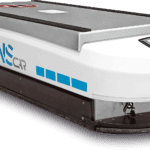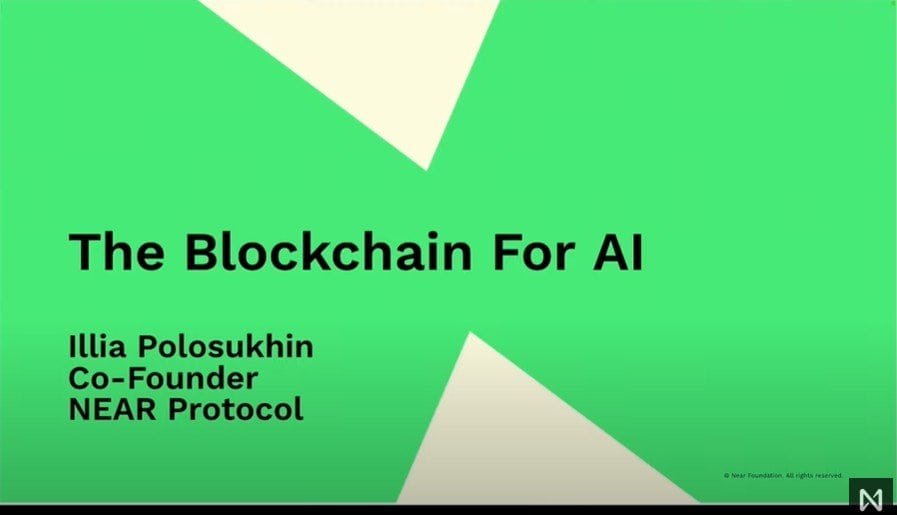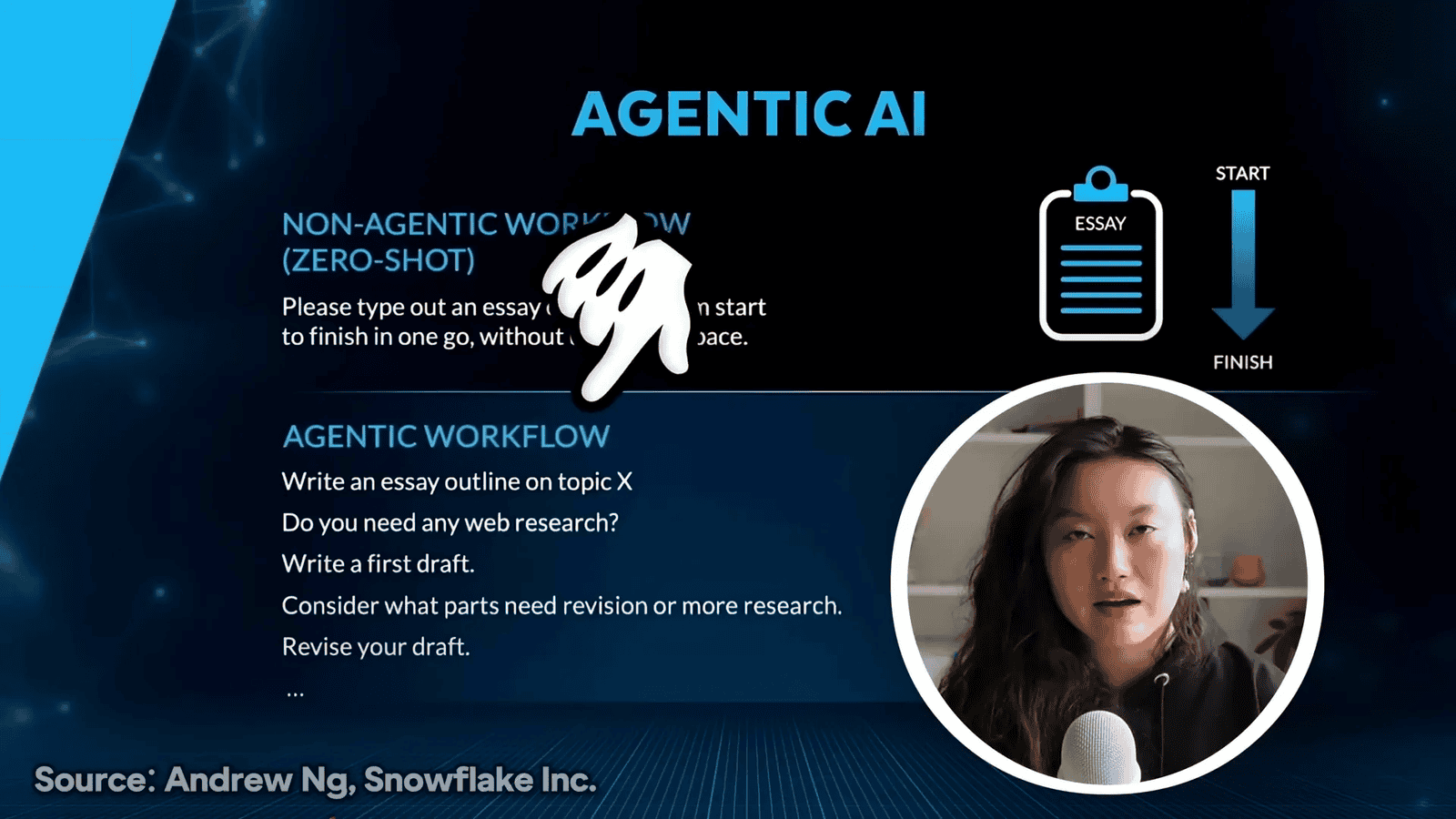On November 20, 2024, NEAR showcased its groundbreaking platform, NEAR AI, which focuses on user-owned artificial intelligence. The talk emphasized NEAR Intents, designed to simplify complex blockchain interactions, and highlighted Chain Abstraction, which enables seamless cross-chain functionality. The advancements brought by Nightshade 2.0 were discussed, demonstrating how NEAR scales to support billions of transactions. The presentation also covered NEAR Hub, which integrates data, models, and compute resources to drive decentralized AI innovation. NEAR is positioned not just as a blockchain but as the foundation for an AI-driven Web3 future.
The Near Protocol is at the forefront of revolutionizing the intersection of blockchain and artificial intelligence. This blog delves into the advancements brought by Near Protocol, particularly in user-owned AI, chain abstraction, and the groundbreaking Nightshade 2.0 upgrade, showcasing how these innovations pave the way for a decentralized future.
Presenters included Illia Polosukin (NEAR), Alex Skidanov (NEAR AI), Alex Shevchenko (Aurora Labs), Kendall Cole (Proximity Labs), and Bowen Wang (NEAR One).
Table of Contents
- Introduction to Near Protocol for AI
- Celebrating Nightshade 2.0 Launch
- Consumer Crypto Experience on NEAR
- The Growing NEAR Ecosystem
- The Need for Chain Abstraction
- User-Owned AI: A New Movement
- Building the AI Ecosystem
- Showcasing the Bitte Wallet
- Understanding the Near Protocol Stack
- Current Challenges in the Blockchain World
- The New Paradigm: AI as Your Internet Interface
- Introducing Intents: A New Transaction Model
- Examples of AI Agent Interactions
- Privacy and Trusted Execution Environments
- Launching the NEAR AI Assistant
- Artificial Intelligence: The Future with NEAR
- Innovations in Decentralized AI Agents
- The Road Ahead: Scaling NEAR Protocol
- Dynamic Sharding and Future Scalability
- Conclusion: The Vision for AI and Blockchain
- FAQ
Introduction to Near Protocol for AI
Near Protocol is emerging as a vital player in the artificial intelligence landscape. By leveraging its decentralized infrastructure, Near provides a robust platform for AI applications, enabling developers to build innovative solutions that prioritize user ownership and data sovereignty. This approach aligns with the principles of Web3, where users regain control over their data and interactions.
The integration of AI with Near Protocol opens up a plethora of opportunities. Developers can create AI models that are not only powerful but also transparent and user-centric. This shift towards decentralization ensures that users benefit directly from AI advancements without relying on centralized entities that typically monopolize data and resources.
Celebrating Nightshade 2.0 Launch
The launch of Nightshade 2.0 marks a significant milestone for Near Protocol. This upgrade enhances the blockchain’s capacity to scale and handle increased demand, paving the way for billions of users and trillions of transactions. The team dedicated years of research and development to achieve this, demonstrating their commitment to building a resilient and efficient blockchain ecosystem.
Nightshade 2.0 introduces sharding technology, which allows the network to process multiple transactions simultaneously. This capability not only improves performance but also reduces gas fees, making it more accessible for users. The successful implementation of this upgrade without any downtime showcases the team’s technical expertise and solidifies Near’s position as a leading platform for decentralized applications.
Consumer Crypto Experience on NEAR
Near Protocol is transforming the consumer crypto experience. By focusing on user-friendly onboarding processes and seamless transactions, Near enables users to engage with decentralized applications without the usual complexities associated with blockchain technology. The platform’s design prioritizes accessibility, allowing users to navigate the crypto space with ease.
One notable success story is K Kai, which experienced a 250% growth in its user base since its launch this year. With over 20 million users and 4 million monthly active users, K Kai exemplifies how a consumer-centric approach can drive adoption in the crypto space. Other applications like Sweat and Meteor are also contributing to this growing ecosystem, providing diverse functionalities that cater to various user needs.
The Growing NEAR Ecosystem
The NEAR ecosystem is rapidly expanding, with numerous projects emerging that leverage its capabilities. This growth is not just limited to individual applications; it encompasses a broader movement towards collaboration and interoperability within the blockchain space. The introduction of chain abstraction allows different applications across various chains to work together seamlessly, enhancing the overall user experience.
As the ecosystem evolves, it is crucial to foster an environment where projects can thrive without being confined to a single blockchain. This approach encourages innovation and enables developers to tap into the strengths of multiple platforms. The focus on community-driven initiatives further strengthens the NEAR ecosystem, ensuring that all participants can contribute to and benefit from its growth.
The Need for Chain Abstraction
Chain abstraction is a pivotal concept that addresses the limitations of traditional blockchain architectures. By enabling seamless interaction between different chains, Near Protocol allows developers to create applications that are not restricted to a single blockchain’s capabilities. This flexibility is essential for fostering innovation and enhancing user experiences.
As the blockchain landscape continues to evolve, the need for interoperability becomes increasingly apparent. Chain abstraction facilitates this by providing a framework that connects various decentralized applications, regardless of the underlying blockchain technology. This interconnectedness not only improves efficiency but also empowers users to engage with a broader array of services and functionalities.
User-Owned AI: A New Movement
The concept of user-owned AI is gaining traction, and Near Protocol is at the forefront of this movement. By decentralizing AI technologies, users can retain control over their data and how it is used. This shift challenges the traditional model where centralized entities dominate AI development and data collection.
With user-owned AI, individuals can benefit directly from advancements in artificial intelligence. This model promotes transparency and fairness, as users have the power to decide how their data is utilized. Near Protocol’s infrastructure supports this vision, providing the necessary tools and resources for developers to create decentralized AI applications that prioritize user agency.
Building the AI Ecosystem
To fully realize the potential of user-owned AI, a comprehensive ecosystem must be established. This includes a diverse array of data providers, storage solutions, and computational resources. Near Protocol aims to create an environment where developers can build AI applications that are not only innovative but also aligned with the principles of decentralization.
This ecosystem will encompass everything from data indexing to decentralized storage solutions, ensuring that developers have access to the tools they need to create effective AI models. By fostering collaboration among various stakeholders, Near Protocol is laying the groundwork for a thriving AI landscape that benefits users and developers alike.
Showcasing the Bitte Wallet
The Bitte Wallet exemplifies the innovative spirit of the Near Protocol ecosystem. This wallet is designed to facilitate seamless interactions between users and various AI agents. By enabling users to communicate with different agents, the Bitte Wallet allows for the creation of transactions and interactions on behalf of the user, providing a richer experience.
What sets the Bitte Wallet apart is its integration with multiple blockchain networks. Users can stake on NEAR, interact with Ethereum, and leverage the natural language interface to simplify complex transactions. This extensibility opens the door for developers to build additional agents, further enhancing the wallet’s functionality.
Understanding the Near Protocol Stack
The Near Protocol stack is a multifaceted framework that integrates user-owned AI, chain abstraction, and sharded blockchain technology. Each component plays a crucial role in creating a cohesive ecosystem that empowers users and developers alike.
At its core, Near Protocol facilitates user interactions with AI-driven interfaces that can perform transactions across different blockchain networks. This seamless integration eliminates boundaries, allowing for a fluid exchange of assets and services.
Current Challenges in the Blockchain World
Despite the advancements in blockchain technology, several challenges remain. The existing landscape is often marred by ineffective user experiences, where traditional search engines dominate and advertisements clutter the space. This model prioritizes profit over user satisfaction, leading to a frustrating experience for consumers.
Moreover, blockchain transactions, while efficient, often lack the necessary support for real-world commerce. The absence of comprehensive service agreements and dispute resolution mechanisms leaves users vulnerable in their transactions.
The New Paradigm: AI as Your Internet Interface
The integration of AI as the primary interface for the internet is a transformative concept. This paradigm shift allows users to interact with technology in a more natural and intuitive manner. AI assistants can understand unique user needs, making personalized recommendations and decisions that enhance overall well-being.
In this new model, AI doesn’t merely seek the top results from a search engine; it evaluates thousands of options to find the best fit for the user. This capability is vital for creating a user-centric experience that prioritizes individual preferences over commercial interests.
Introducing Intents: A New Transaction Model
The introduction of “Intents” represents a significant evolution in transaction models within the blockchain landscape. Intents allow users to formalize agreements for exchanging assets, goods, and services in a structured manner. This new model incorporates essential functions, including terms of service and dispute resolution mechanisms.
With Intents, users can attach relevant information and stipulations directly to their transactions. This facilitates a more secure and reliable process, ensuring that both parties uphold their commitments. Furthermore, the model integrates seamlessly with various AI agents and services, creating a robust ecosystem for transactions.
Examples of AI Agent Interactions
AI agents play a crucial role in streamlining user interactions and automating tasks. For instance, imagine waking up to your AI assistant fetching the latest news headlines and summarizing them for you. This proactive engagement not only saves time but also enhances the user’s information consumption experience.
In another scenario, during a crisis, AI agents can coordinate efforts on behalf of users, such as managing fundraising campaigns or distributing resources efficiently. This automation allows for rapid response and better resource management, showcasing the potential of AI in real-world applications.
Privacy and Trusted Execution Environments
Privacy remains a paramount concern in the digital age. Near Protocol addresses this issue through Trusted Execution Environments (TEEs), which ensure that sensitive user information remains secure. When interacting with AI agents, users can rest assured that their data is protected, even from the developers of those agents.
TEEs enable secure transactions and data processing, allowing users to engage with services without compromising their privacy. This layer of security is essential for fostering trust in the blockchain ecosystem, particularly as AI becomes more integrated into everyday transactions.
Launching the NEAR AI Assistant
The NEAR AI Assistant represents a significant leap in integrating artificial intelligence within the NEAR Protocol ecosystem. This assistant is designed to facilitate interactions between users and various decentralized applications. By leveraging natural language processing, it allows users to execute complex tasks with simple commands.
For instance, users can instruct the AI Assistant to create a meme coin. The assistant not only processes the request but also generates a complete webpage for the coin, ready for deployment. This ability to automate actions based on user intent showcases the potential of AI to enhance user experience on the NEAR Protocol.
The AI Assistant also remembers user preferences, such as favorite colors or previous interactions, which adds a personal touch to its services. This shared memory across agents allows for a more cohesive and tailored user experience. Users can easily create multiple meme coins or switch contexts seamlessly, demonstrating the assistant’s versatility.
Artificial Intelligence: The Future with NEAR
As we look toward the future, artificial intelligence is set to play a pivotal role in shaping interactions within the NEAR Protocol ecosystem. The current landscape of AI is dominated by a few centralized entities that control large language models, which poses a challenge to the decentralized ethos of Web3.
NEAR Protocol aims to decentralize AI by providing a platform where various data sources, models, and experiments can coexist. This decentralization is crucial for creating a user-centric internet, where individuals have control over their data and AI interactions. By fostering an open environment, NEAR encourages innovation and accessibility in AI development.
Innovations in Decentralized AI Agents
Decentralized AI agents are becoming increasingly important in facilitating user interactions across different applications. These agents can execute transactions, manage data, and interact with various services on behalf of the user. The integration of these agents into the NEAR ecosystem allows for more dynamic and responsive applications.
For example, when a user wants to purchase a product, the AI agent can generate a rich user interface for the shopping experience. It can also manage the transaction process, ensuring that the user’s preferences and data remain secure throughout the experience. This level of automation streamlines processes and enhances user satisfaction.
The Road Ahead: Scaling NEAR Protocol
Looking ahead, scaling the NEAR Protocol is essential for accommodating the growing demand for decentralized applications and AI services. The infrastructure must evolve to handle millions of transactions efficiently while maintaining low fees for users.
Strategies for scaling include further enhancements to sharding technology and optimizing the network for high throughput. By ensuring that the NEAR Protocol can support a large number of users and applications, it will position itself as a leading platform in the decentralized ecosystem.
Dynamic Sharding and Future Scalability
Dynamic sharding is a critical component of NEAR Protocol’s scalability strategy. This technology allows the network to adjust its resources dynamically, allocating more capacity when needed and optimizing performance during peak usage times. This flexibility is vital for maintaining user satisfaction and ensuring seamless interactions.
As the ecosystem grows, dynamic sharding will enable NEAR to support a multitude of applications without compromising speed or efficiency. This capability is particularly important for AI applications that require real-time processing and quick responses to user queries.
Conclusion: The Vision for AI and Blockchain
The integration of artificial intelligence within the NEAR Protocol ecosystem presents a transformative vision for the future of technology. By decentralizing AI, NEAR empowers users to take control of their interactions, ensuring that they benefit from advancements without being exploited by centralized entities.
As NEAR Protocol continues to evolve, it will foster an environment where innovation thrives, and users can engage with technology in a meaningful way. The commitment to user ownership and data sovereignty will be at the forefront of this revolution, setting a precedent for future developments in the blockchain and AI space.
FAQ
- What is Near Protocol? Near Protocol is a decentralized platform designed to facilitate the development and deployment of applications, particularly those leveraging artificial intelligence.
- How does the NEAR AI Assistant work? The NEAR AI Assistant utilizes natural language processing to interpret user commands and automate tasks across various applications within the NEAR ecosystem.
- What is dynamic sharding? Dynamic sharding is a scalability technique that allows the NEAR Protocol to allocate resources based on demand, ensuring efficient transaction processing.
- How does NEAR Protocol ensure user data privacy? NEAR Protocol employs Trusted Execution Environments (TEEs) to secure user data, ensuring it remains confidential even when processed by AI agents.
- What is the future of AI on NEAR Protocol? The future of AI on NEAR Protocol is centered around decentralization, user ownership, and fostering an open ecosystem for innovation.
This blog post is inspired by the video above. The original creator is given all credit for the video content. Be sure to check out their channel for more amazing content!










